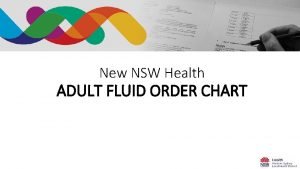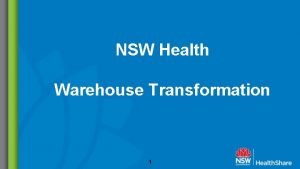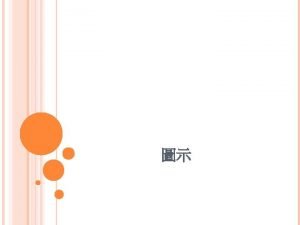New NSW Health ADULT FLUID ORDER CHART The










- Slides: 10

New NSW Health ADULT FLUID ORDER CHART

The new form • The Standard NSW Health form – common across all hospitals • Used for prescribing: ü Fluids with medications added (excepting S 8 drugs) ü Blood Products • To be implemented at Westmead on Tues 5 th June (excl ICU HDU NICU) • From 5 th June all new fluid orders will commence on new form • Existing orders on the old form do not have to be re-charted

What’s else has changed? • Addressograph label can be now be used – But the patient’s name MUST still be handwritten in the space provided • It is a two sided form: Instructions regarding patient identification and use of addressograph apply equally to both sides • Fluid Type and Additive are now in separate columns. Specify additive in terms of mg, mmol or units • Route of administration must now be prescribed in Route column

What’s new • Instructions section – For special instructions – Relevant comorbidities – Fluid Restriction • Indication section • Column for Date/Time started and new column for Date/Time Finished


Patient Identifiers Three approved patient identifiers that MUST be documented on BOTH sides of the form: • patient name • medical record number • date of birth Addressograph Patient ID Labels are may be used. Addressograph labels The prescriber MUST confirm that the details on the addressograph label are correct at the time of writing the prescription by hand writing the patient’s name under the addressograph label

Allergies Completion of this box is the primary responsibility of the medical officer Information MUST be handwritten and MUST not be left blank. Document “NKA” for patients with nil known allergies or “unknown” if allergy status is unable to be obtained Indication This field should be completed with the relevant disease process for which the fluid and/or additive is prescribed e. g. dehydration, maintenance, hypokalaemia etc.

Fluid type Drug infusions MUST have the diluent fluid written in the fluid type box and NOT the additive drug/chemical. The additive drug/chemical MUST be written in the Additive box. Pre-mixed bags MUST be separated into diluent in the fluid type box and drug/chemical additive MUST be written in the Additive box. Volume (ml) - MUST be completed for every order. MUST be written in millilitres (e. g. 1000 m. L rather than 1 L) Additive and amount Additives MUST be the active drug/chemical. The amount should be written in molar or mass units. e. g. 20 mmol, 3 g, 25 000 units, 10 microg

Rate (ml/hr) MUST be completed for every order. Rate MUST be written in millilitres per hour. Titratable fluids MUST specify a starting rate and a titration parameter. e. g. start at 3 m. L/hr and titrate to MAP>65 mm Hg “APP” (as per protocol) is NOT acceptable. The specific name of the protocol MUST be written on the order in the Indication box. This is to ensure that the correct protocol is selected and followed. Route MUST be completed for every order. Only use WSLHD Drug Committee approved abbreviations: e. g. subcut or IV Multi-route prescribing is NOT permitted. e. g. subcut / IV

Important! 1. Administration of medication/fluids required during the course of a clinical emergency CAN be commenced without prior charting on the NSW Health Adult Fluid Order Chart. 2. As with all forms, this one needs to be filled out properly and signed. In particualr, nurses and midwives will not be able to start an infusion in the following circumstances: • First prescriber has not handwritten patients name under addressograph label • “APP” (as Per Protocol) has been used when a protocol is required and the specific protocol has not been documented on the form in the Indications box Medical officers will have to return and document prior to administration commencement



















